Early History of the Adventist Church
The name "Seventh-day Adventist" highlights two of the distinguishing characteristics of the denomination. "Seventh-day" refers to the day
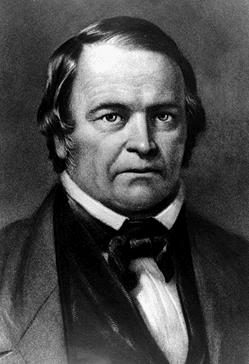
of the week, Saturday, on which Adventists worship God as instructed throughout the Bible. "Adventist" refers to the hope Seventh-day Adventists have in Jesus' soon return to this earth. October 1, 2010, marked the 150th anniversary of the adoption of the name “Seventh-day Adventist.”
Though Adventists did not officially organize as a church until 1863, Adventist roots go back at least to the early 1800s. Between 1831 and 1844, William Miller, a Baptist preacher,
launched the "great second advent awakening," which eventually spread throughout most of the Christian world. Based on his study of the prophecy of Daniel 8:14, Miller calculated that Jesus would return to earth in 1844. When Jesus did not appear, most of the thousands who had expected His return left the faith, disillusioned. A few, however, went back to their Bibles to discover why they had been disappointed. They learned that the Bible prophecy did not specify Christ's second coming on that date, but rather, they discovered that 1844 was the time when Jesus would begin a special ministry in heaven for His followers.

From this small group, who refused to give up after the "great disappointment," arose several leaders who built the foundation of what would become the Seventh-day Adventist Church. Standing out among these leaders were a young couple, James S. White and Ellen G. White, and a retiredsea captain named Joseph Bates. Ellen White, a mere teenager at the time of Miller's preaching on the "great second advent awakening," grew into a gifted author, speaker and administrator who would come to enjoy God's special guidance as she wrote counsels to the growing body of believers. In 1860, at Battle Creek, Michigan, the
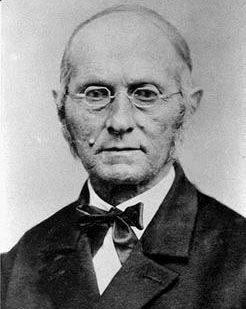
loosely-knit congregations of Adventists, who had continued to seek and gain understanding of the Scriptures after the "Great Disappointment," chose the name "Seventh-day Adventist," and in 1863 formally organized as a church. In 2018, the Seventh-day Adventist Church had a baptized membership of over 20 million, and continues to preach and look forward to the soon return of Jesus.
California Missionaries - 1859
In 1848 the Golden State became a possession of the United States after the Mexican American War, by the treaty of Guadalupe, although there were earlier Spanish residents whose missions were south of San Francisco. The Russians had put their mark in California in the northern part of the state, naming the Russian River and Sebastopol, but they left by 1824. The population of the entire state in the early 1840’s was 6,000, but in 1849 the population of San Francisco alone was 85,000. Gold had been discovered in the Golden State at Sutter’s Mill, and California was welcomed into Union in 1850.
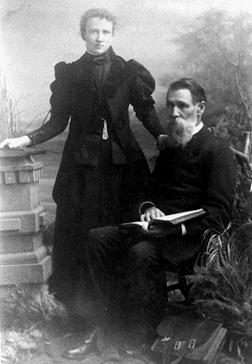
It appears that Merritt G. Kellogg (pictured with his wife, Louisa, at right), the oldest son of J.P. Kellogg, was the first Seventh-day Adventist in the State of California, arriving in the spring of 1859. His family spread the Good News by sharing literature and books. Their first convert was B. G. St. John and his family, that forty-niner who made and lost a large fortune in gold mining. Meeting with some success, Kellogg in 1861 held meetings in the courthouse in San Francisco on a weekly basis, and there were eventually 14 who confessed their faith in Jesus and His Church, including Mrs. Short (the wife of the chief of police) and Mr. Moon (a gold-seeker).
Adventist Church Formed - 1863
The Adventist Church was formally formed at the first General Conference Session on May 21, 1863.
Kellogg organized a Sabbath School in his home. Early in 1865, an Adventist cobbler, L. W. Cronkite, hung a placard of the Ten Commandments and a prophetic chart on his shop wall. When customers made inquiries about the strange beasts, Cronkite gave them a study on the prophecies. So much interest was aroused that in the fall of 1865, the little Adventist company decided to send $133 in gold to Battle Creek to pay the travel expenses of a minister to labor in California. Alas, the General Conference had no one to send. (Testimonies to the Church, IV, 489, 490.)
In the spring of 1867, the little group of believers in San Francisco decided to lodge their appeal once again to the General Conference by sending Merritt G. Kellogg to the General Conference Session, but unfortunately, he was not able to arrive on time for the session.
Kellogg decided to take matters into his own hands. He sold his home on the west coast, traveled eastward, and occupied himself until the next General Conference Session which was held May 28, 1868, where he would appear in person.
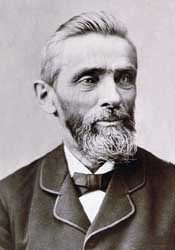
At first it seemed his plea would again go unheeded. Then, when only two workers remained to be assigned, one of them, J. N. Loughborough (pictured left), arose. He spoke of recent dreams which had left him with a strong impression that he should hold tent meetings in California. “Should Elder Loughborough go alone?” asked James White. After all, Christ had sent his disciples out two by two. That seemed a good plan to follow for so distant a field. D.T. Bourdeau (pictured at right) thought so, too. He would gladly accompany Loughborough.
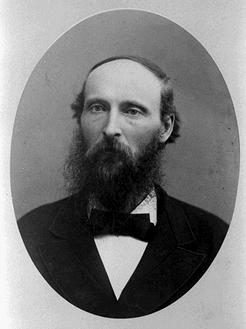
Immediately James White set about raising $1,000 to purchase a new tent for California and to finance passage for the Loughborough's and Bourdeau by way of Panama. No time was wasted. Less than a month after making their decision, these “missionaries” boarded a ship in New York City. Twenty-four days later, on July 18, 1868, they were in San Francisco. Here they were warmly welcomed by the St. Johns and other members of the Adventist company. (O. Macomber, Pioneering the Message in the Golden West, (1946) 54, 58, 59, 63-67.) They lodged with B.G. St. John, "the converted forty-niner". As they scouted the San Francisco area, they found that food was very inexpensive but the rental of homes and buildings to hold meetings was very expensive. There was a church in a small town called Petaluma about 50 miles north of San Francisco, which was known as an Independent church. Members had seen a notice in an Eastern newspaper that two men were traveling west with a tent to hold evangelistic meetings. They were able to make contact with Bourdeau and Loughborough in San Francisco and the Independent church invited them to Petaluma to hold meetings.
On August 13, about a month after having arrived in California, Bourdeau and Loughborough launched their series of tent meetings in Petaluma at the Independent church. As the story goes, one of the members of this Independent church had a dream one night where he saw two men kindling five fires. In his dream, he saw the ministers of the other churches in Petaluma trying to put these fires out, but the more they tried to put the fires out, the more they burned. Finally he heard the ministers say in the dream, "It is of no use. Leave them alone. The more we try to put out the fires, the better they burn." – J.N. Loughborough, Rise and Progress of the Seventh-day Adventists, p. 276-279.
Everything seemed to be going fine until they presented the Sabbath doctrine and a division arose among the Independent church members with only six accepting the Sabbath doctrine and uniting with the Seventh-day Adventist group.
Upon completing these meetings in Petaluma, Bourdeau and Loughborough moved on to Windsor, to the north, then to Piner, then on to Santa Rosa and Healdsburg. It is interesting to note, that the "five fires", that had been kindled, were now burning.
St. Helena - 1873
On April 11, 1869, at the Piner School House near Windsor, the temporary state organization was formed with about 60 believers present. Work soon spread into the Napa Valley to Yountville and Napa, and by July 30, 1873 Elder Loughborough and Elder Cornell moved their tent to Saint Helena. The Valley’s newspaper, Napa Register, recorded, “The Adventists, who have been holding their tent meetings, are now attracting the general attention and causing the dry bones to shake. Elder Cornell is nightly drawing large, attentive, orderly, and appreciative audiences.” At the close of these lectures 36 signed the covenant and Hanna Willsie-Creamer, the only surviving member in 1945, recalled them as a “substantial class of people, well-respected citizens.”
The Sabbath School was organized November 8, 1873 with Emery Church, Samuel Jacks, James Creamer, and John Mavity as officers. These four laymen were devoted workers and had much to do with the establishment of the work in St. Helena. The California Conference was formed that year with seven churches and 238 members; tithe was $2,151.51. J. N. Loughborough served as president and the offices were in Oakland.
There is little report of further progress in St. Helena until May 16, 1874 when Elder Loughborough presented the matter of church organization among Seventh-day Adventists. He presented the church covenant, and the following day twenty persons signed their names to the covenant which read as follows:
“We, the undersigned, hereby associate ourselves together as a church taking the name Seventh-day Adventist, convenanting to keep the commandments of God and the Faith of Jesus.” The signatures that followed were:
• John Mavity
• Amelia Mavity
• Samuel Jackson
• Julia Jacks
• Emory Church
• Millard Church
• Sarah J. Anthony
• Ruth C. Cruey
• Elizabeth Carter
• Anna Boyd
• Sarah R. Spencer-Atwood
• Mary Ann Stephenson
• James Creamer
• Hannah Creamer
• Margaret Cooper
• Martha Hudson
• Emily Wood
• Lovicy Thomson
• Hugh Hackney
• Thomas Barry
On June 4, 1874, Elder James White began to issue an eight-page semimonthly paper, The Signs of the Times, as a further means of spreading the Adventist principles on the Pacific Coast. After producing six issues, he arranged with the California Conference to take charge of the paper and returned east to obtain means to put the enterprise on strong footing. At the General Conference held in August of that year it was proposed to raise $6,000 east of the Rocky Mountains for this purpose, provided the brethren on the coast would raise $4,000, secure a suitable site, and erect a building. Elder George I. Butler brought this proposition to the California brethren assembled at the Yountville camp-meeting in October, and they responded by raising $19,414 in coin. The Yountville church today is named "Signs Memorial Seventh-day Adventist Church. The Sabbath keepers in California then numbered 550, and the yearly tithe amounted to more than $4,000.00. In 1875 The Pacific Press Publishing Association was organized in Oakland. It moved to Mountain View in 1904 and eventually relocated to Nampa, Idaho in 1984.
Health Resort - 1878
A small health resort was opened near St. Helena in 1878 under the direction of Merritt Kellogg, who had received medical training in 1867. This has grown into a large hospital system, and a number of similar institutions have been established throughout California, Washington, Oregon, Nevada, Utah and Hawaii.
By late 1890 the nearby Health Retreat [the forerunner of the Sanitarium, which was the forerunner of St. Helena Hospital, the oldest still-operating Adventist hospital in the world] planned their own church. At a business meeting on December 13, 1890 the St. Helena Church was disbanded, and at the same meeting it was reorganized, leaving out those members who wished to join the Sanitarium Church.
Madrona/Oak Avenue Church - 1880
Services were held for a time in a home on Pope Street, but as the congregation grew they rented the Baptist Church for their meetings. On February 2, 1880, WA Pratt deeded the property on the corner of “Madrona Avenue and Oak Avenue” to the “Trustees of the Seventh Day Advent Church, and their successors in office” for the sum of $1. WA Pratt was listed as one of those Trustees. December 4, 1877 Elder and Mrs. James White made their first visit to the church, and on January 24, 1880 the first church in St. Helena was dedicated. It was located at the corner of Madrona and Oak Avenues, and is now owned by the American Legion. Tax Records from 1890-93 show that the real estate was worth $225, and the building improvement to the site added $700, for a grand total assessed value of $925.
During the early years many of the pioneer ministers assisted in pastoring the church or were frequent visitors. They were:
• Elder JN Loughborough
• Van Horn
• H. A. St. John
• JD Rice
• WA Pratt
• John Fulton
• WC White
• Mrs. Ellen G White
• Elders AB Attwood
• Uriah Smith
• GI Butler
• SN Haskell
• WM Healey
• Archa Dart
• RA Underwood
• FM Wilcox
• Robert Hare
• EE Beddoe
In 1900 Ellen White moved to Elmshaven, near St. Helena. She died there in 1915.
Brown Street School - 1913
and Church - 1931
The first church school was started in 1908, and in 1913 the church purchased six lots on Brown Street for $150 on which to build their school. Included in this was a May 28 purchase from Ellen White, who sold 1.008 acres of land to the Society of Seventh-day Adventists on Brown Street for $10.00.
The church met with financial problems in 1929 when the city decided to pave the two streets by the church, and the cost of paving, curbs, and gutters in the church, along with needed repairs to the church building resulted in a decision to sell the Madrona/Oak property and church for $1,500 to the American Legion. They then used the money from the sale to build a new church on the extra land by the church school on Brown Street. The cost of the new church was less than $2,500 cash. This new building was completed and dedicated free of debt on October 3, 1931.
Main Street Church - 1962
When Elder Borg was the district pastor and Elder James, his associate, was pastor of the St. Helena congregation, the membership passed the 200 mark and they began planning for a larger church. By December 1953, through negotiations by Dr. Meade Baldwin, Horace Jenkins (realtor), Elder S.T. Borg, and Dr. H.L. Byrd, they succeeded in purchasing the present site on Main Street from the Ursuline Sisters who had operated an academy on this location for many years. The deed for the one and three-quarters acres tract was signed by Mother Columbs, president of Ursuline Academy, Santa Rosa, after permission had been secured from the Mother General in Rome. The cost was about $10,000 [about $81,000 inflated to 2010 value], the burden of which was born by a core group of 13 families.
Meade Baldwin recounts the "women were the backbone of much of this project, holding bake sales every Thursday at Jenkins' Real Estate office in St. Helena. They became well-known, and eventually a local restaurant invited them to use a large refrigerator for their goods."
Almost five years passed before they were prepared to invite contractor Lloyd Landis to supervise the building of the present church. Mr. Landis had previously built churches with the help of unpaid volunteer workers, and he seemed like just the right man. Ground was broken on April 22, 1959 and actual construction began three months later. The old stone wall, a landmark on Main Street, was retained. As many old trees as possible were also retained, and though their majestic stature lends to a cooler and more beautiful environment, their massive roots are lifting parts of the asphalt and cement side surrounding the church.
Within a month after construction began, Elder AC Lien became pastor at the Brown Street Church (August, 1959) and it was three years later that the Main Street building was first occupied on March 24, 1962, using chairs and other seating for the services. Even the chandeliers in this sanctuary, which still shed light for us week after week after 46 years, were hand crafted by Wilbur Mitchell and by Emmett Cramer, the father of Ralph Cramer. Here is Ralph’s account:
“My dad and Wilbur Mitchell did all the heating and duct work on the church. I think they donated all the labor and maybe some of the material. My dad designed the lights and built a prototype. We then had church members come to the shop in the evenings and cut out pieces and assemble the lights. Marge Baldwin did a lot of work on them. I worked some on them as well as many other church members.”
Four groups within the church were formed to raise money for pews and floor coverings, spear-headed by Meade Baldwin. On November 3, 1962, it was noted that “Clyde Tucker’s band is leading in the amount raised to date.” One pew cost $200. The target date for obtaining the funds was December 31, 1962. Ralph remembers baking chocolate chip cookies “and selling them outside the college gym before the Adventure Series and Artist Series programs. I think we raised several hundred dollars for the building project that way. There were a lot of people involved in many different fund-raising projects.”
Dedication of the Main Street Church - 1963
Ten years and four pastors after the initial purchase of the land, the church was declared debt-free at its dedication service on November 30, 1963 at a cost of $159,378 cash, though its value stood at $325,000. Many thousands of hours (some estimate 20,000 hours) of volunteer labor by both men and women of the church enormously defrayed the cost. “Elephant Auctions,” dinners, breakfasts, chocolate chip cookies (!), and other fund-raisers were used. Others who should receive special mention for time spent on the project were Elder JI Robison, James Webster, Dr. JE Weaver, John Gallion, C. Clendennon, Dr. Meade Baldwin, Peter Wall, and Fred Landis.
Elder MV Campbell, vice president of the General conference, read parts of the forty-second
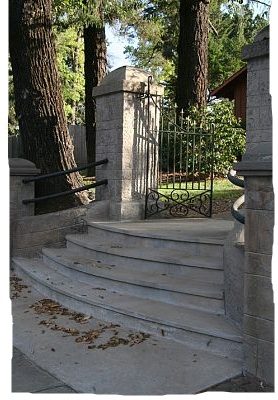
Psalm featuring the place of a dedicated house of worship and a dedicated congregation in the community. The choir, led by Margaret Moline Young, with organist Lowell J. Smith, sang the National Anthem, in memory of the late President. Dr. Meade Baldwin was the Sabbath School Superintendent that day, and Fedalma Ruhl played organ for the church service. The afternoon dedication was attended by over 600 people.
In 1965 the Upper Valley Associates conferred an Award of Merit upon the church, for “distinction of church design and grounds fronting on highway.” An article in the Napa Register noted that the St. Helena SDA Church was awarded the plaque “for being the most beautiful church on a state highway.”
Remodeling - 1980's
During the 1980's a beautiful stained glass window for the front of the church was
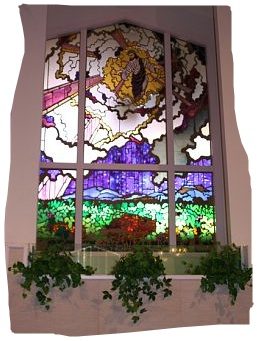
designed by Clinton Connelly with input from Angwin artist Pam Jones, and built by Rio Linda Academy. It is centered above the baptistery, and depicts Christ coming from Heaven, with brilliant green vineyards below. To the sides of this large pane are two smaller panes of stained glass, depicting Angels blowing trumpets, heralding Jesus' arrival. The windows are completely inside the church. The main window is in front of a large outdoor window, however it and the smaller windows are back-lit, giving the feeling of sunlight streaming in.
Around this time Mrs. Ivy Ruth Venden passed away, and as her estate was being settled, the church received a sizable monetary gift which was enough to furnish all the window treatments in the sanctuary. Mrs. Venden was aunt of Reatha Ekvall.
The Balcony Express - 1987
In 1987 a Sabbath School class consisting of about 20 members met in the balcony of the sanctuary. The daughter of two of the Sabbath School members was serving as a missionary in Togo, a small poverty-stricken sub-Saharan nation in west Africa. When they were home on furlough they visited the class on Sabbath, where they were asked to tell about their field. Dr. Meade Baldwin recalls:
“All the Adventist church had in Togo was a small mission office in the capital city. The church consisted of a large tarp attached to the mission office, which was stretched over folding chairs. Before they came on furlough, they had with their own money, purchased a choice lot for a future church. They had designed a church with Sabbath School rooms, which could be built later. They estimated the church cost would be $35,000 US Dollars.
“At the close of class Marjorie and I invited the class for lunch at our home the next Sabbath to discuss helping them some. I had envisioned raising a thousand or possible two thousand dollars. $35,000 isn’t much today, but then it was a lot.
“During the next week I had the opportunity to learn more about their plans as I met them and their children in the dental office.
“As we sat in our living room the next Sabbath enthusiasm became contagious. Suddenly one of our members, Walter Eberlein, stood up and said, ‘These people are giving their lives there. They have so many needs. Why don’t we build a church for them?’ We all agreed. We were worshiping in a church built by faith. Why not build another one? Before we parted we had enough pledges for a good beginning.
“Someone suggested our class should have a name. Kathy Kachuck suggested Balcony Express to indicate we were going somewhere. So Balcony Express it became. Once again we began to plan projects. The father who was a class member had been a baker, though now he was employed by the hospital in a different position. He dusted off his recipe for coconut chocolate macaroons. He, his wife, and Marjorie baked macaroons by the hundreds, and pies by the dozens.”
Over the next months the class served strawberry shortcakes at the college flea market. White Elephant sales and dinners of lasagne with garden-picked tomatoes in the sauce were always in vogue. The other Sabbath School classes joined in to help. Dr. Baldwin continued:
“We forwarded the money as it became available and they sent us videos of the building progress. They used mostly volunteer labor as we had done. Their main expenses were for cement and tin for the roof. As these had to be imported, inflation pushed their cost way up. Their Division helped a little toward the end. We kept up until the church and Sabbath School rooms were finished. The videos show a beautiful complex. As a “thank you” they sent us a clock, which we placed in the balcony near our class. They said the project had far-reaching effects in their country, not only in the city but elsewhere. People in other areas were inspired. They said if people who never knew them could do this for them they could work to help themselves. Small meeting houses began to spring up where branch Sabbath Schools had been started. Maybe the story of the clock can inspire us again!
“Somehow the General Conference heard about the project. When their film crew was in southern California they contacted us and came up to film some of our other projects. They used this footage the next General Conference session and sent me a video. Wish I could have been there to see it on the big screen.”
St. Helena Food Pantry - 1993
At the southern part of the Fellowship Hall, which is known as the Fireside Room, is a large area dedicated to storage and distribution of food to the needy. Previously housing the "Dorcas," a clothing and household goods distribution site for needy persons, this proved to be the ideal location for an Upper Napa Valley Community Food Pantry. Fedalma Ruhl related the history of the Food Pantry:
“The Food Pantry was started in 1993 after a request came to me from the St Helena Clergy. There had been a small Food Closet (literally a small closet) at the Episcopal Church. A group of ladies had started going to the restaurants and bakeries in town and getting surplus things to deliver to a list of needy folk. The Clergy group (I'd been meeting with them as the local Social Worker for years) came to me to see if the St Helena Church had any space that could be used for a larger, more effective site for distributing food. Our church had just added on the space that is currently used for the Pantry. It was to have been for storage.
"I presented the need to our Church and suggested that the only way it could possibly work would be for all of the other Churches in town to get behind the project and provide volunteers and funds to support it. I knew our Church could never do it alone. As you probably know - the community really got behind the program and there have been wonderful volunteers giving of their time. The Episcopal church has been the largest financial supporter and the Post Office had always done a yearly food drive. I had also been involved with the Salvation Army for many years in distributing funds - vouchers - in the Upper Valley and was able to help with some funds and vouchers from that source.
"Dorothy Hamp was our first Manager and worked diligently for years with Betty Gilreath as the Treasurer. Betty was very involved in ordering, etc. Marye Carter, from Elmshaven Church, also worked there for a long time until her hip gave her too much trouble. Frank Ogletree (no longer living) was a very faithful volunteer for years - picking up bread from Safeway and other stores and bringing it to the Pantry. Of course Geneva Hanson was one of the most recent dedicated volunteers. Linda Bertoli - the current Manager is a neat gal to know and work with. Father Mac from the Episcopal Church has been a long time (from the beginning) supporter and used to serve on the Board. Randy Horning did a lot of painting and helped get it looking good again after years of use." Pam Larson, head deaconess, is currently very involved with working in the Food Pantry, and other folks have plugged in where able. Bruno Proell spends several hours hauling the breads from Safeway and several bakeries each week.
In addition to the annual post office drive, other organizations collect food for the pantry (Boy Scouts and Pathfinders) and weekly rounds to the area bakeries are made to pick up surplus baked items which are then distributed to the needy. The food pantry is open three days weekly from 2:30 – 4:00 PM and is staffed by community volunteers. Thousands of items including canned goods, dairy, fresh produce, and frozen meat products funnel through the pantry each year, and myriads of families are served.
PASTORS
Elder DE Venden became pastor in the late summer of 1964.
Beginning January 1966 Elder WR Foulston served the church as pastor for the next seven years and ten months. During this time the church improvement campaign completed the present facility by the addition of the youth chapel, social room, and the welfare complex. Other improvements included the purchase of a Custom-Rogers Organ with antiphonal speakers; also the church participated with the other area churches in the completion of the Foothills Elementary School, and an addition to the Pacific Union College Preparatory School, which provides the educational needs of the youth to the college level.
Elder James Pogue became the pastor November 24, 1973 and took over plans for the Centennial year celebration.
In 1974 the Adventist Church celebrated its centennial year both in St. Helena and in the mission field. Elder WR Beach, a vice-president of the General Conference, was the morning speaker, and told of the world-wide work of the church. A pageant entitled, “A Dream, A Boat, A Tent” was written by Ava Covington-Wall and directed by Mrs. Pogue and Wes Amundson, Assistant pastor. It portrayed the beginnings of the Adventist Work in California and God’s Providences in leading the early pioneers in the holding of tent meetings. Written in the Centennial Pictorial Directory is this note: “Surely if the pioneers of the work in St. Helena with those who followed during the decades could join in this centennial celebration they would have mixed emotions of joy and sadness – joy to know what God has done during the years with small beginnings, but sadness to realize we have been left in this world of sin and sorrow so many years more than they had expected. With the spirit of the pioneers let us accept the challenge of finishing the work quickly in our part of the Lord’s vineyard.”
During the years that Pete Geli was pastor, he helped the church develop its mission statement:
To Know Jesus Fully
To Reflect His Character Clearly
To Share his Message Joyfully
Maranatha! Come soon, Lord Jesus!
St. Helena House Pastor:
Elder John N. Loughborough May 16, 1874
Brown Street Pastors:
• Elder EF Petersen
• Elder ST Borg
• Elder EH James
• Elder AC Lien - August 1959
Main Street Pastors:
- (Elder Lien)
- Elder DE Venden - late summer of 1964 - end of 1965
- Elder WR Foulston – January 1966 –October 1973
- Elder James Pogue - November 24, 1973 - 1977
- Elder Kenneth Smith 1977-1983
- Elder Arvin Winkle -1983-1988
- Elder Preston Smith -1988 – April 12, 1989
- Elder Jim E. Mamanua - 1988-1995
- Elder Pete Geli - August 19, 1995 - May 2002
- Elder Robert Hancock - October 2002-April 2007
- Elder ER Gane April 2007-December 2007
- Elder Daniel Freedman - January 2008- November 2017
- Church Elders - November 2017 - September 2018
- Elder Robert Kurtz - October 2018
Acknowledgments:
- St. Helena Star
- Napa Register
- Pacific Union Recorder
- Ruth Brehm
- Ralph Cramer
- Beverly Cramer
- Dr. Meade Baldwin
- Fedalma Ruhl
- Reatha Ekvall
- Pam Jones
- Dennis Brown, docent of Elmshaven
- Northern California Church History
- St. Helena Hospital History
Compilation by Jennifer Oliver
